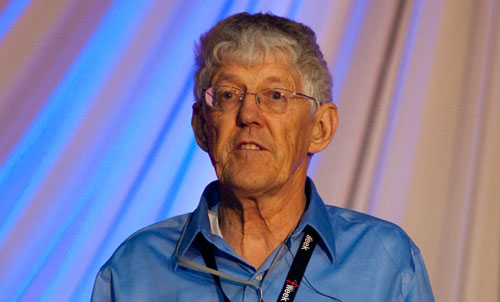
The African Internet has the highest data packet loss and the worst throughput figures of any region in the world. Moreover, the continent is about 18 years behind Europe in terms of performance and the situation is improving more slowly than other parts of the world, meaning the continent’s connectivity could be as much as 70 times worse than the developed world in a decade.
This is according to Roger Cottrell of the Slac National Accelerator Laboratory in US. He says the result is African scientists are isolated because they don’t have the network capacity needed for effective collaboration.
Cottrell says a further cost of Africa’s connectivity problems is the brain drain it causes. Internet access is essential because it facilitates innovation and Cottrell says Africa needs to do everything it can to remain abreast of the rest of the world. “The whole continent combined has less than a third as much international capacity as Austria alone.”
At the same time, the cost of Internet access remains problematic. Cottrell says Africa is still burdened with the “highest cost and worst cost-to-earnings ratio for Internet connectivity”.
There is some good news though: though African bandwidth is still the most expensive on earth, it is dropping by a factor of two every year, Cottrell says.
He says Africa has only recently achieved a “mean opinion score” of over three. The scale measures how well phones work on a scale of five, with 3,5 the measure for useful voice over Internet Protocol (VoIP) telephony. “We must remember that Africa is a huge place, so this is indicative of the best and worst of it averaged,” says Cottrell.
The importance of fibre cannot be underestimated because of what it does for data round-trip times. “The minimum round trip for a geostationary earth orbit satellite is 450ms. VoIP requires 250ms or less.”
Cottrell says the impact that fibre has is obvious and easily measurable. The average round-trip time for Africa dropped from 720ms to 325ms when Seacom went live in 2009 and, except for a minor hiccup when the submarine cable went down, it has remained that way.
He says this reduction in round-trip times was due to new international fibre cables landing on the continent’s shores. “The next step is to take fibre connections to inland areas. Once fibre and capacity are in place, you still need last-mile infrastructure, though,” says Cottrell.
He says last-mile needs may be best met with cellular and WiMax solutions, particularly where rural areas are concerned.
Despite the challenges, Cottrell says international bandwidth coming into Africa increased 14-fold between 2006 and 2010 and the continent remains highly attractive for investors. — Craig Wilson, TechCentral
- Subscribe to our free daily newsletter
- Follow us on Twitter or on Facebook
- Visit our sister website, SportsCentral (still in beta)

